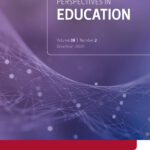An analysis of TIMSS 2015 science reading demands

This study investigated the reading demands of restricted-use items administered to South African grade 9 learners as part of the Trends in International Mathematics and Science Study (TIMSS) 2015. The method proposed by Mullis, Martin and Foy (2013) was used to categorise items into low, medium and high readability groups. The ‘knowing’ domain contained mostly low readability items; the ‘applying’ domain was almost equally medium and high readability items; with the ‘reasoning’ domain containing mostly high readability items. Results show significant differences between the percentage of correct answers between the low and high categories and between the medium and high categories. However, the impact of reading demand on performance cannot be fully analysed without cross-reference to English proficiency. Nevertheless, the higher the readability, the greater the chance is for learners to answer incorrectly. A continued expected low performance for most South African learners is implied.
